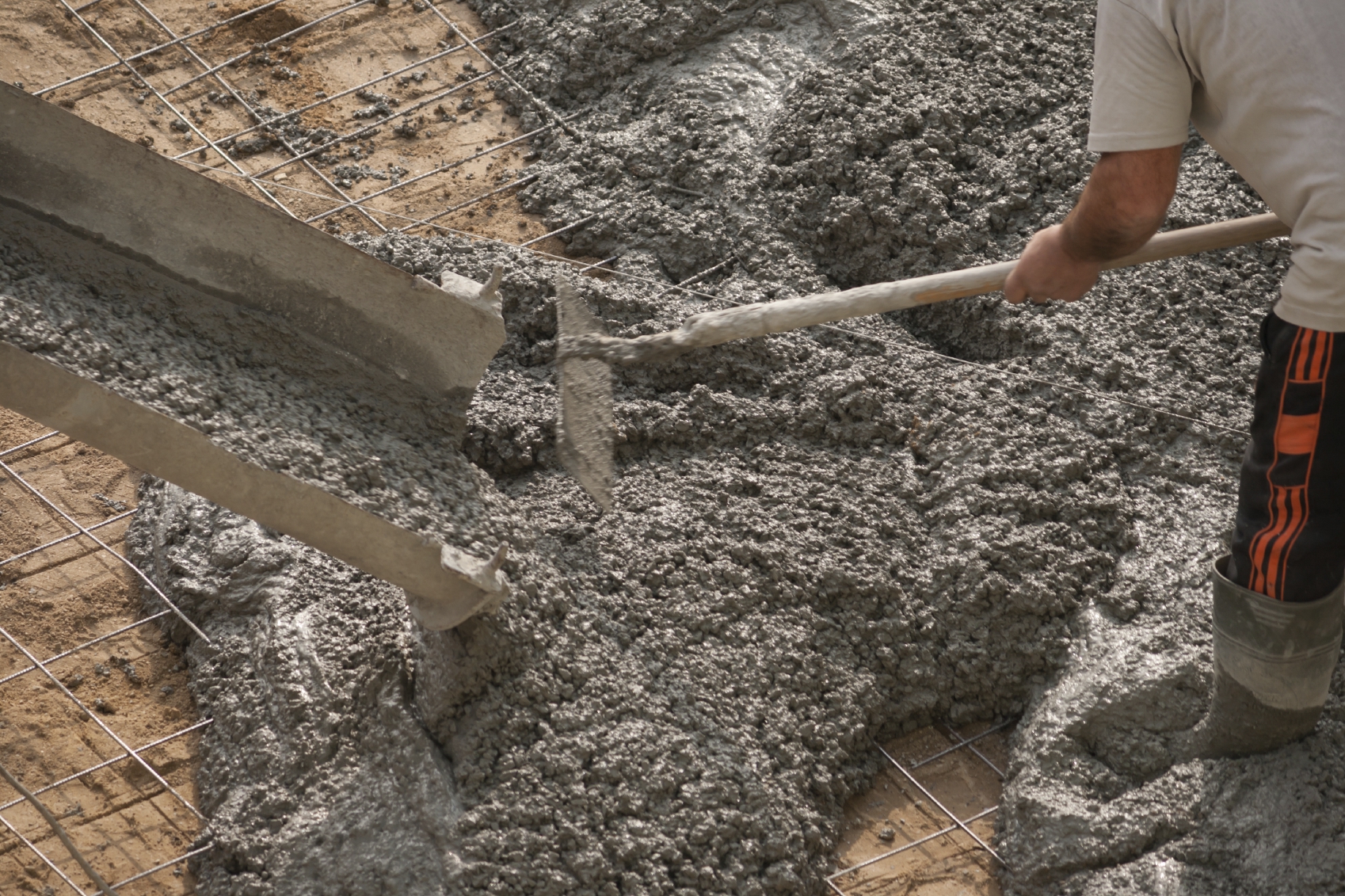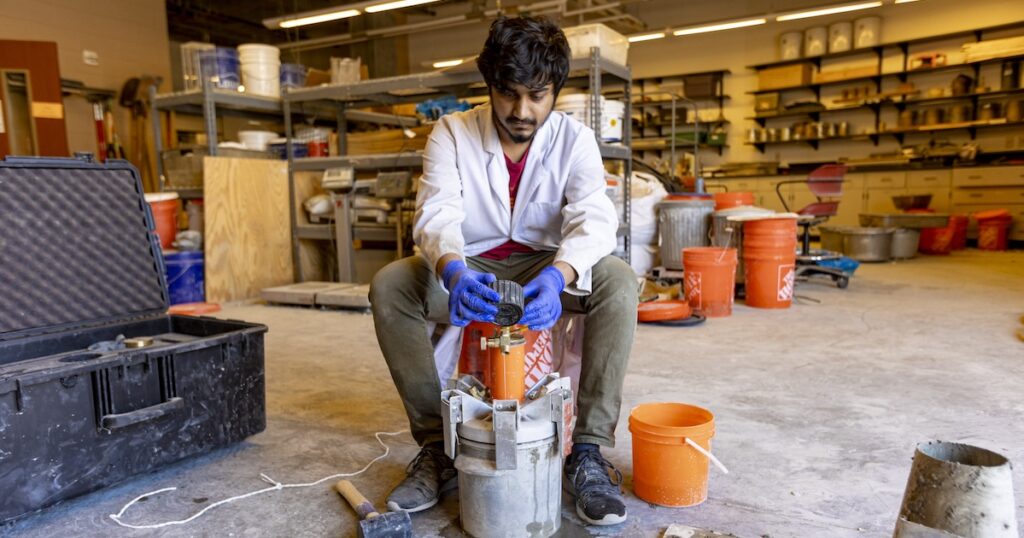The Essential Role of Concrete Foundation in Structural Stability and Long Life
When it pertains to constructing a residential or commercial property, the foundation is a lot more important than you could assume. Concrete structures give unmatched strength and sturdiness, ensuring your structure can withstand different environmental obstacles. Without a strong base, you risk potential issues like shifting or cracking, which can endanger safety and security and value. Recognizing the subtleties of concrete structures can be the trick to maintaining your financial investment for many years to find. So, what should you think about following?
Understanding the Importance of Concrete Foundations
Concrete foundations are crucial to the general stability of any structure, as they give the crucial assistance needed to withstand various lots and environmental conditions. When you think of developing a home or a commercial room, the structure is the first point you must think about. It functions as a barrier versus wetness, protecting your residential or commercial property from water damages. A well-placed concrete foundation additionally stops settling and shifting, which can bring about fractures in wall surfaces and floorings. You'll wish to guarantee that the structure is effectively created and reinforced, as this impacts the longevity of your structure. Additionally, a strong foundation can improve power effectiveness by reducing air leaks. Keep in mind, neglecting the value of a concrete foundation can bring about costly fixings down the line. Investing in a high quality structure upfront is vital for the honesty and resilience of your structure.
Benefits of Concrete Structures for Architectural Integrity
While numerous variables add to a building's structural integrity, concrete foundations supply unrivaled toughness and strength. You'll appreciate that concrete can stand up to severe weather conditions, standing up to both moisture and temperature fluctuations. This durability suggests your structure is much less most likely to experience cracking or moving gradually, which can endanger its safety.Additionally, concrete's fundamental weight offers a strong base, preventing movement during all-natural occasions like earthquakes or floods. When you pick a concrete structure, you're also opting for reduced upkeep; unlike wood, it won't rot or bring in insects, saving you money and time in repairs.Moreover, concrete's fire resistance provides added safety and security, guaranteeing your framework can withstand heats without substantial damages. In general, purchasing a concrete foundation means you're prioritizing the lasting security and honesty of your structure, making it a smart option for any construction project.
Usual Kinds Of Concrete Foundations
When it pertains to developing foundations, understanding the usual kinds of concrete foundations can help you make informed selections for your job. The most prevalent kinds include slab-on-grade, crawl space, and complete cellar foundations.A slab-on-grade foundation is an easy, cost-effective alternative, where a thick concrete piece is poured straight on the ground. This kind works well in warm environments, as it lessens heat loss.Crawl room structures raise the home slightly over ground, permitting ventilation and accessibility to pipes and electrical systems. This layout can assist avoid wetness issues.Full cellar structures offer added living or storage area while offering excellent architectural support. They call for even more excavation and are usually utilized in colder environments to stop frost heave.
Elements to Think About When Designing a Concrete Structure

Best Practices for Setting Up Concrete Foundations
When you're installing a concrete structure, appropriate site preparation is necessary to ensure stability (West Coast General Engineering commercial concrete). You'll also require to recognize support techniques to improve strength and longevity. Finally, don't overlook the treating procedure, as it plays a basic role in achieving a solid foundation
Website Preparation Relevance
It might appear uncomplicated, appropriate site prep work is important for guaranteeing a strong and resilient concrete foundation. Beginning by getting rid of the area of any particles, plants, or organic product that might jeopardize the foundation's integrity. Next off, examine the soil kind and compaction; you could need to dig deep into or include products to produce a steady base. Level the ground to assure also weight distribution and stay clear of clearing up problems later on. Mounting appropriate drainage systems is additionally necessary to avoid water accumulation, which can deteriorate the foundation with time. Mark out the foundation's dimensions properly to direct the putting process. By following these actions, you'll set the stage for an effective concrete foundation that stands the test of time.
Reinforcement Strategies Discussed
Once the website is correctly prepared, the following action in guaranteeing a tough concrete foundation includes implementing reliable reinforcement strategies. You ought to begin by utilizing steel rebar, which gives tensile stamina and aids prevent splitting. Lay the rebar in a grid pattern, seeing to it it rises utilizing spacers to keep appropriate protection. In addition, think about making use of wire mesh for extra support, particularly in locations subject to heavy lots. Don't fail to remember to connect the rebar junctions securely with wire. For larger foundations, fiber support can boost resilience, decreasing the danger of contraction splits. Constantly follow local building regulations and guidelines to guarantee conformity. By using these reinforcement techniques, you'll considerably enhance your foundation's strength and longevity, laying a solid groundwork for your framework.
Healing Refine Essentials
To guarantee your concrete foundation remedies appropriately, it is very important to preserve sufficient wetness and temperature conditions instantly after pouring. Start by covering the surface area with a damp cloth or plastic bed linen to preserve wetness. This keeps the concrete hydrated, stopping splits and making certain toughness. You need to additionally monitor the temperature level; suitable treating conditions are in between 50 ° F and 90 ° F. If it's also warm, haze the surface on a regular basis to prevent fast evaporation. For winter, think about using shielding coverings to keep warmth. Go for a curing period of a minimum of 7 days, as this is crucial for ideal toughness advancement. By complying with these ideal methods, you'll improve your foundation's durability and long life, making certain architectural stability for several years to find.
Maintenance of Concrete Structures for Long Life
To keep your concrete foundation solid and enduring, regular examinations are crucial. You need to likewise assure efficient water drainage options are in area to avoid water damage. If you detect any type of cracks, addressing them without delay will save you from bigger problems down the line.

Regular Assessments and Evaluations
While routine evaluations and evaluations might look like a chore, they're vital for preserving the stability of your concrete structure. By consistently examining for splits, shifts, or signs of wear, you can catch prospective problems before they escalate into costly repair work. Search for any type of water merging around the foundation or uncommon settling, as these can indicate underlying issues. It's also important to keep an eye on any type of modifications in your house's framework, like doors that stick or windows that stamped concrete edging cost don't open efficiently. Keeping a document of your inspections aids track adjustments with time, permitting aggressive maintenance. Inevitably, these assessments assure your structure stays steady, supporting the longevity and safety of your entire framework. Don't overlook this crucial element of homeownership!
Efficient Water Drainage Solutions
Normal examinations can disclose problems like drainage troubles that may jeopardize your concrete structure's stability. To avoid water accumulation, assure your rain gutters and downspouts direct water far from the foundation. Installing French drains pipes can successfully redirect surface area and groundwater, minimizing stress on your foundation wall surfaces. In addition, grading the dirt around your home helps assure that water streams away, instead of pooling near your foundation.Consider using sump pumps in locations prone to flooding, as they actively get rid of excess water. Routinely check for clogs in drain systems and clear them without delay. You'll secure your foundation's honesty and longevity by taking these positive measures. Bear in mind, effective drain options are crucial for keeping a strong, sturdy concrete concrete repair near me foundation.
Trigger Split Repair Works
When you see cracks in your concrete structure, resolving them promptly is important for preserving its longevity. Little splits can quickly progress right into larger issues, jeopardizing the structural integrity of your home. Routinely examine your foundation for signs of damage, such as straight or upright cracks. If you find any type of, do not wait-- fix them immediately. You can use epoxy injections or concrete patching substances, which work for securing cracks. Always follow the producer's directions and take into consideration consulting an expert for considerable damage. Bear in mind, prompt repair services not only boost your structure's durability but also save you money over time by avoiding a lot more substantial repair work down the line. Stay aggressive, and your foundation will remain strong and secure.
Addressing Common Issues With Concrete Structures
Concrete structures can deal with numerous problems in time, making it critical to recognize and address them without delay. One of one of the most usual issues is breaking, which can take place because of temperature level changes or settling dirt. If you notice cracks, it's necessary to assess their dimension and depth; small splits can usually be secured, while larger ones might require expert evaluation.Water intrusion is one more significant issue. Excess dampness can bring about mold and mildew growth and architectural degeneration. Guarantee appropriate water drainage around your structure to reduce this threat. Additionally, try to find indicators of shifting or bowing walls, as this can indicate underlying problems with your foundation's stability.Regular examinations are essential to catch these troubles early. If you spot any decorative epoxy type of worrying indicators, do not be reluctant to speak with a structure specialist. By remaining proactive, you can preserve the stability and long life of your concrete structure, guaranteeing your home remains risk-free and safe.
Regularly Asked Inquiries
How Does Soil Type Affect Concrete Foundation Performance?
Soil kind substantially influences concrete structure efficiency. If you've got expansive clay, for instance, it can cause shifting and breaking. Sandy soil may cause clearing up. Recognizing your dirt assists ensure a steady structure.
Can Concrete Foundations Be Repaired if Damaged?
Yes, you can repair damaged concrete foundations. Depending on the extent of the damage, strategies like epoxy shot or piece jacking can bring back security. It's finest to seek advice from an expert for efficient services.
What Is the Common Lifespan of a Concrete Foundation?
A concrete foundation typically lasts 30 to 100 years, depending on factors like dirt problems, climate, and maintenance. You'll intend to maintain an eye on it to assure it stays in great shape throughout its life-span.
Are There Alternative Materials to Concrete for Foundations?
Yes, there are options to concrete for structures, like steel, lumber, and even recycled products. Each alternative has one-of-a-kind advantages and downsides, so you must consider your job's specific demands when selecting the best product.
Exactly How Does Environment Influence Concrete Structure Durability?
Climate greatly influences concrete foundation resilience (West Coast General Engineering commercial concrete). Severe temperature levels, moisture, and freeze-thaw cycles can damage the material, causing cracks and architectural concerns. You must consider local environment problems when preparing your structure to guarantee long-lasting efficiency